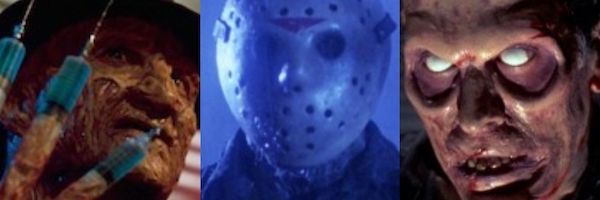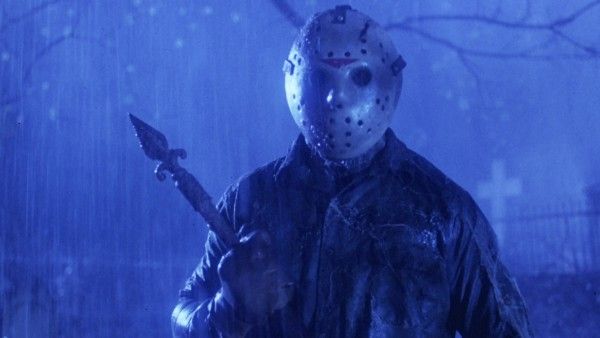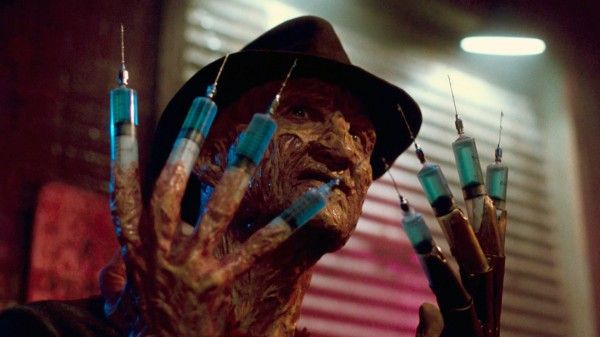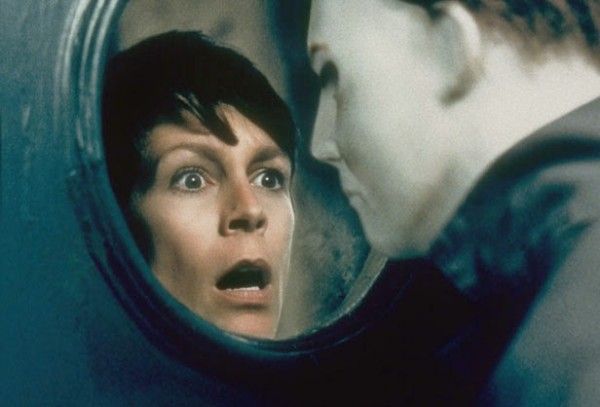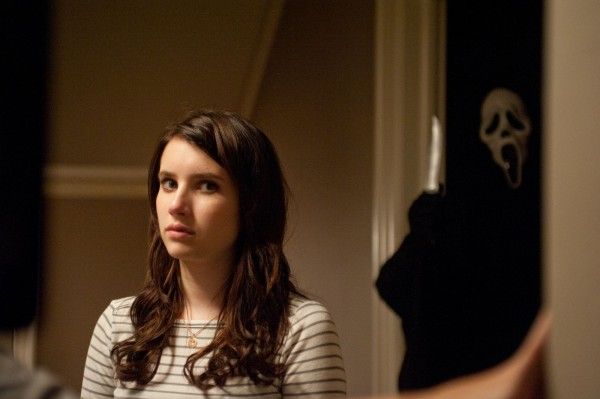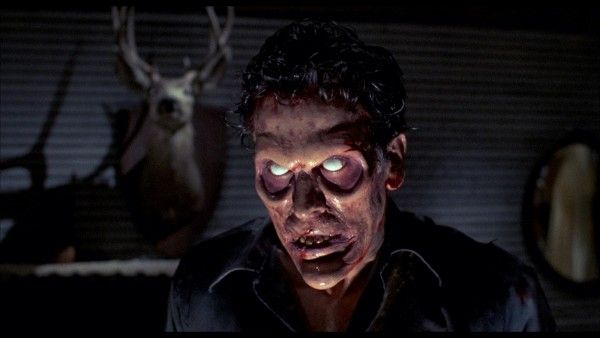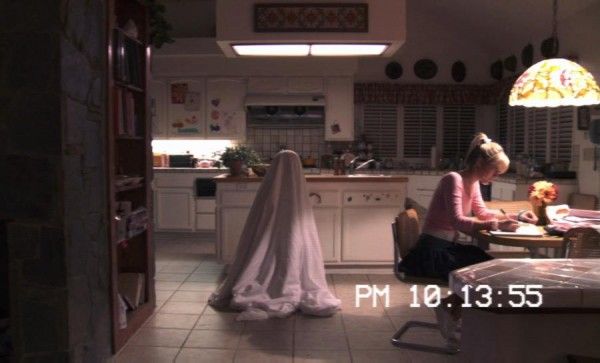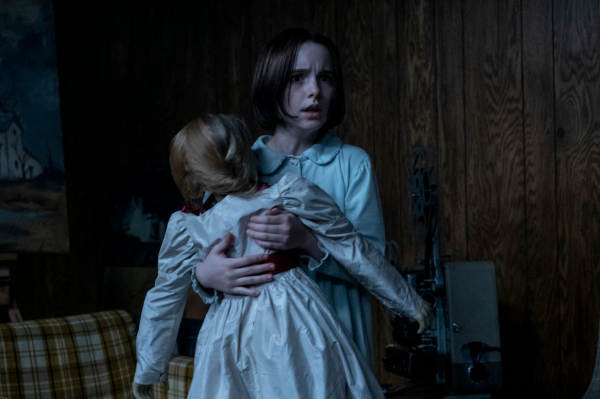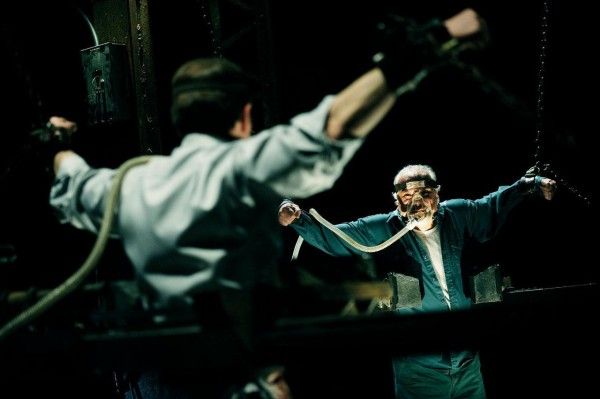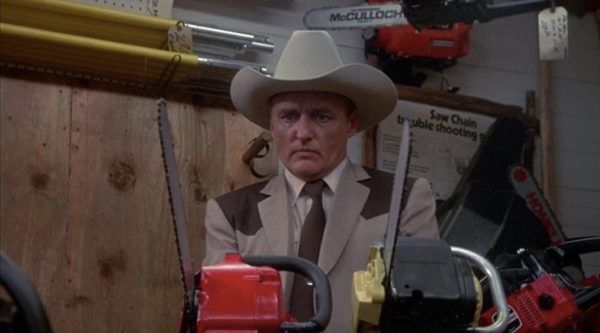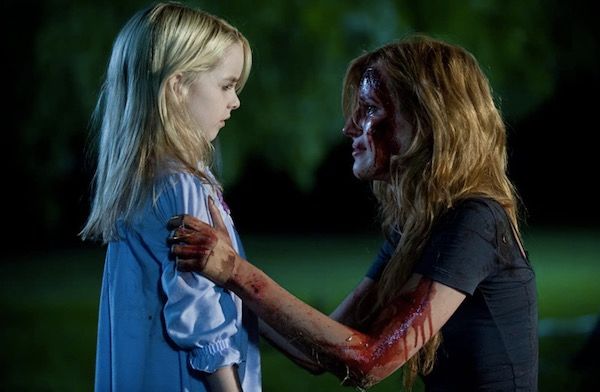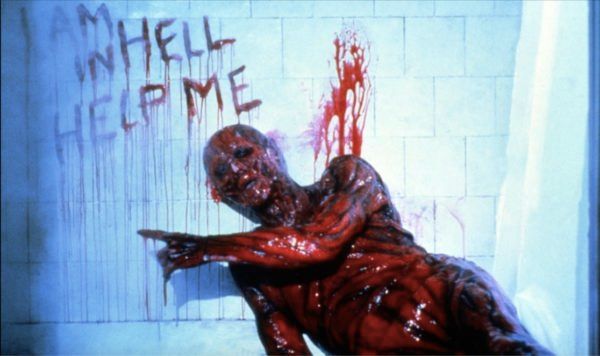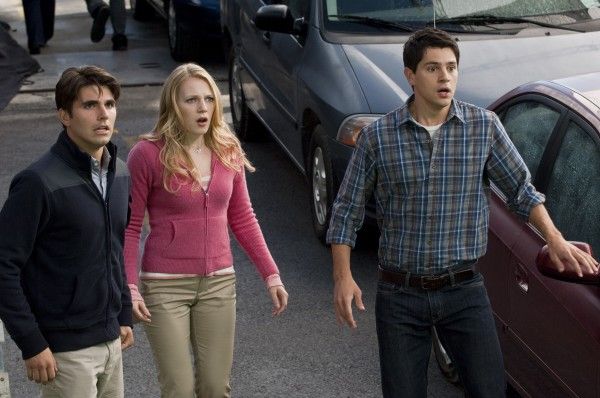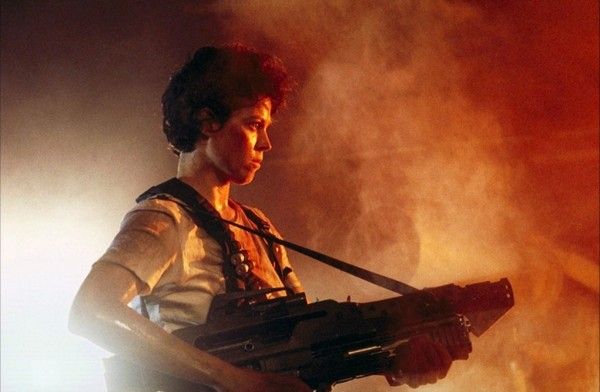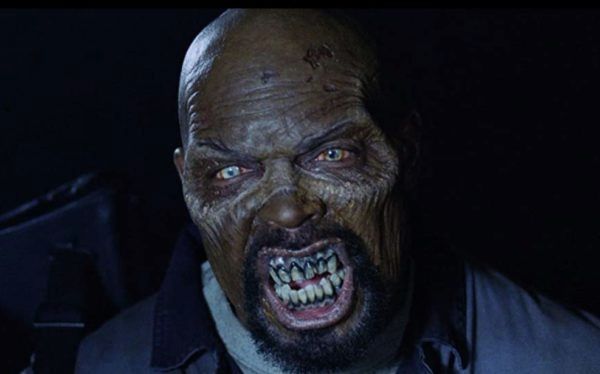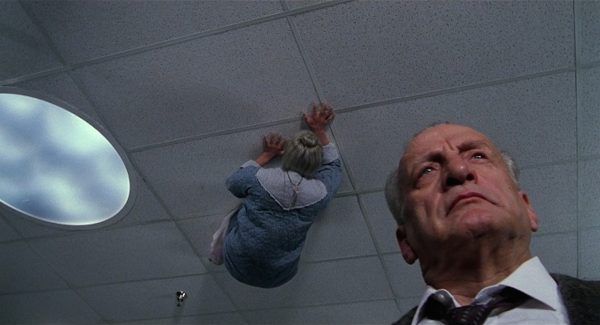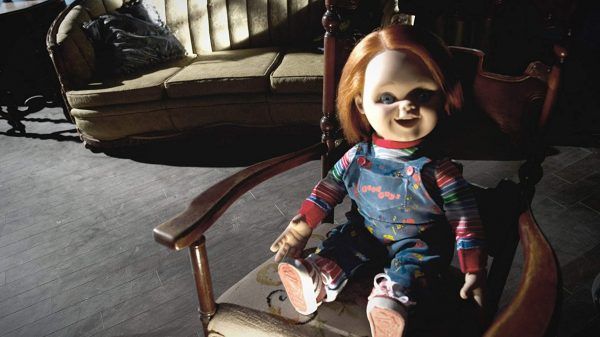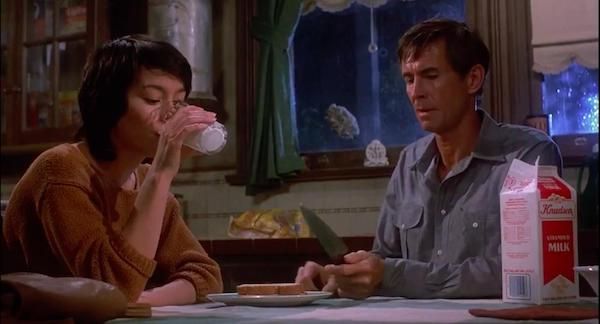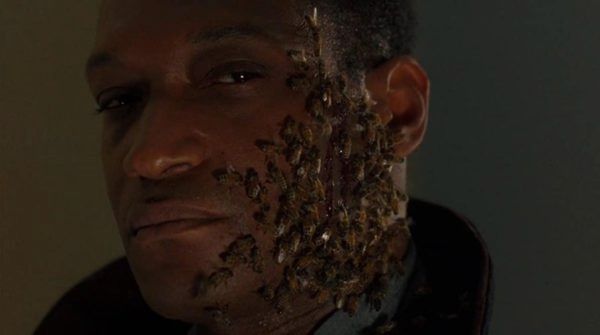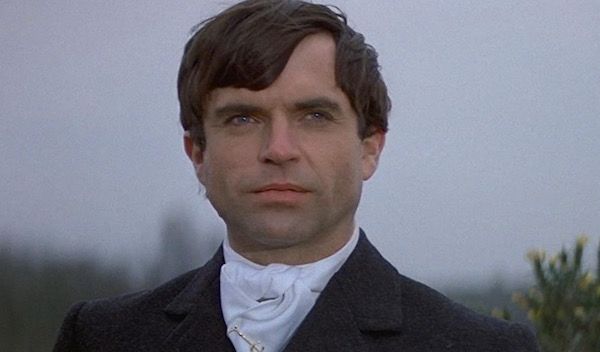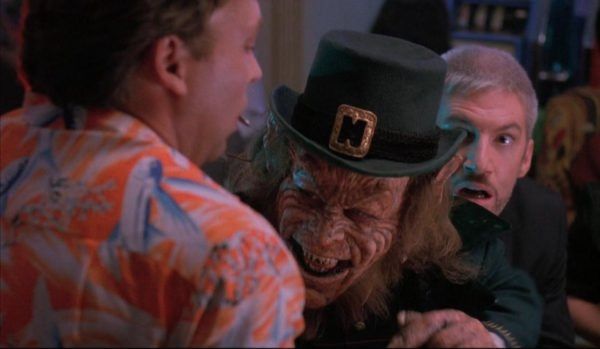Since there has been horror, there has been horror sequels. One of the most beautifully twisted quirks of the genre is how often these independent, shoe-string flights of fancy suddenly turn into money-printing franchises. Halloween. Friday the 13th. A Nightmare on Elm Street. Horror is built on the backs of nightmares that were only supposed to last a single night and ended up stretching across decades. Just by the law of averages, this has resulted in plenty of...less than stellar films. Even the most diehard among us can admit that horror is littered with a vast selection of subpar sequels, reboots, reimaginings, and every story extension in-between. And yet! It's also a wonderfully deep landscape filled with diamonds in the rough for those willing to dig.
Below, we take a trip through 20 horror franchises and highlight the times that, against all odds, spooky lightning struck twice.
Friday the 13th
'Friday the 13th Part VI: Jason Lives'
Friday the 13th Part VI: Jason Lives is not only the best Friday the 13th sequel, but it is also the best Friday the 13th, period, and proof positive that a franchise can still have juice long after people are calling for it to be put in the ground. In a wonderfully zany homage to Frankenstein, Jason Voorhees—played with hulking intensity this time around by C.J. Graham—is raised from the dead by a bolt of lightning, bringing to life the superhuman, increasingly-slimy version of the character most people picture when they think of Jason Voorhees. Writer/director Tom McLoughlin also hit the entire series with a jolt of electricity, introducing the type of meta-humor that set the stage for Scream alongside genuinely impressive action set-pieces, like the van-flip that results in one of the most iconic horror images of all time. At the end of the day, any franchise with 12 movies will spark an endless debate about which one is "best, but it is inarguable that only one Friday the 13th begins with massive mutant killing machine Jason Voorhees parodying James Bond, a thing that is Good, Actually.
A Nightmare on Elm Street
'A Nightmare on Elm Street 3: Dream Warriors'
It might be the third of eight films, but tonally The Dream Warriors represents the dead-center of A Nightmare on Elm Street for Freddy Krueger, in between the horrific boogeyman introduced by Wes Craven in 1984 and the circus clown marketing machine he'd become by the time Freddy's Dead debuted in 1991. What that means is, this is the ultimate Freddy Kreuger; Robert Englund is still terrifying and the kills are still gnarly as hell—the tendon puppet strings, dear lord!—but also the one-liners hit hard. There's simply nothing that can top an immortal nightmare ghoul saying "welcome to prime time, bitch" before smashing a young woman's head into a television set. The script, Craven's last contribution to the franchise before he returned for the (also great!) New Nightmare, makes incredibly clever use of dream logic, introducing a likable band of psych ward misfits who can fight back against Freddy by becoming the best versions of themselves while asleep. Future Oscar-winner Patricia Arquette is incredible in the lead, and teaming her up with the series' original final girl, Nancy Thompson (Heather Langenkamp), is the best bit of continuity ever seen on Elm Street. Just a classic meal made from the perfect mix of cheese and chills.
Halloween
'Halloween H20: 20 Years Later'
Discussing Halloween as a franchise means confronting a harsh truth that often gets drowned out by that timeless synth score: Almost all of Halloween is bad. John Carpenter's original belongs on the damn Mt. Rushmore of the genre, a masterclass in tension and release that's as chilling today as it was in 1978. The rest of the series is like, the gift shop at the bottom of Mt. Rushmore selling dinky replicas. Halloween II is mostly pale imitation. Halloween III: Season of the Witch is a fun little sci-fi diversion. The 1988-1995 trio of films that aimed to soothe angry fans and bring back Michael Myers are, collectively, a hot mess, mostly raising the question of why nobody could ever make that Wiliam Shatner mask look cool again. Rob Zombie's set of remakes are interesting but an extremely acquired taste. The 2018 legacy sequel is...good. It's good! But I also think it might've gotten a little overpraised because, again, we got so accustomed to movies featuring Michael Myers being very bad!
So! That leaves us with the only entry in this complex, complicated franchise that hits all the marks fans want while also feeling wholly satisfying: the terribly-titled Halloween H20: 20 Years Later. It's not a perfect movie, but Jamie Lee Curtis' return as Laurie Strode—now running a boarding school and dealing with some serious PTSD—is a powerful performance. H20 arrived in the post-Scream afterglow where slashers actually got budgets, and genre veteran Steve Miner (Friday the 13th Part II and Part III) adds a wonderfully late-90s polish to the action. This is also the most intense the connection between Laurie and Michael has ever felt, a real destined-to-do-this-forever vibe that adds more to the mythology than anything the Cult of Thorn ever did.
Scream
'Scream 4'
I simply will not ever stop dying on the Scream 4 hill, stabbed over and over again by the knife of public opinion. The impact of Wes Craven's 1996 meta-slasher is inarguable, but what is very, very arguable are the merits of its three sequels, which carried the horror icon all the way to 2011. Folks, Scream 4, Craven's final film, is good. It's great. Scream 4 not only introduces the best new cast of characters since the core crew—Alison Brie! Adam Brody! Emma Roberts!—but also remains frighteningly prescient in 2020, satirizing every toxic aspect of internet culture and fandom still going strong today. The gist: 15 years after the first Woodsboro massacre, Sydney Prescott (Neve Campbell) makes the extremely ill-advised decision to return to her hometown on a book tour. Surprise, surprise, a new Ghostface pops back up the moment Sydney crosses state lines. The accuracy with which Craven and writer Kevin Williamson nail the anything-for-clicks attitude and the fanatic fandom that comes with it is astounding, nearly a decade before Tik-Tok meant anything outside a clock. Plus, they do so while also poking fun at the idea of a horror franchise doing one too many sequels—Scream was supposed to be a trilogy, you see—a wink-nudge bit of meta-humor that would've been far too cute in the hands of anyone but a master.
The Evil Dead
'Evil Dead II'
What do you do after making a masterful micro-budget horror that catapults your name into the pop culture conversation but doesn't quite live up to your ambition? If you're Sam Raimi, you basically do the same movie, again, but with roughly 10,000x the physical comedy, practical effects, and overall insanity. Evil Dead II is the blood-soaked crown jewel of the franchise, turning the isolated "cabin in the woods" subgenre into an epic and transforming Bruce Campbell's Ash Williams from charming survivor to one-handed horror icon. The movie's just a whirlwind from beginning to end, combining Raimi's trademark POV shots, a healthy dose of stop-motion, and Campbell's full-body performance, in which he tosses himself around and through the set to sell Ash's battle with the demonic Deadites. In a word: Groovy.
Paranormal Activity
'Paranormal Activity 3'
Paranormal Activity, the micro-budget that basically created Blumhouse while forcing anyone who still owned a hand-held camera to toss that shit in the trash immediately, absolutely did not need to become a franchise. And yet it also absolutely made a crapton of money, so a franchise it became, and if each passing entry isn't going to reinvent the wheel it might as well be scary. Enter Paranormal Activity 3, which is, in fact, very scary. An 80s-set prequel to its two predecessors, the film works to explain how and why the hilariously-named demonic entity "Toby" entered the lives of Katie (Chloe Csengery) and Kristi (Jessica Tyler Brown). It doesn't matter. It's witches? It doesn't matter. What matters is co-directors Henry Joost and Ariel Schulman conjure up the most clever jolts outside of the original, the master-stroke being a camera fixed to the top of a painfully slow oscillating fan. It's like centuries of tension-building techniques distilled into one DIY idea, and the purest encapsulation of the fiendishly simply vibes that made Paranormal Activity a phenomenon in the first place.
The Conjuring Universe
'Annabelle Comes Home'
The connected universe of ghouls and demons kicked off by James Wan's The Conjuring straight-up did an Avengers-style event film and not nearly enough people are aware of it. Famed paranormal investigators Ed and Lorraine Warren (Patrick Wilson and Vera Farmiga) had been teasing their warehouse of haunted objects since their first appearance. But in an act of parenting so brazenly irresponsible you almost have to respect it, the Warrens leave their daughter, Judy (McKenna Grace) and a babysitter, Mary Ellen (Madison Iseman), alone with the cursed trinket garage, and thus: Annabelle Comes Home. The seventh film in the franchise and third focusing on the demon doll Annabelle, the film also serves as a fright-filled backdoor pilot for at least a dozen hypothetical Conjuring spinoffs. When the warehouse is inevitably opened, Judy and Mary Ellen face off against a cabal that includes, but is not limited to, a werewolf ghost, a possessed suit of Samurai armor, a homicidal Milton Bradley board game, and one of those cymbal-clapping monkey toys that doesn't do much but look vaguely menacing. I love him most of all. Longtime Conjuring-verse scribe Gary Dauberman, making his directorial debut, corrals all these horrors into a thrill-a-minute roller coaster, one that should be slotted into all October marathons going forward. Just so much dang fun.
Saw
'Saw VI'
I think what I like most about Saw VI is the way it'd play like complete gobblygook to anyone who'd never seen a Saw movie before. Over the course of five sequels, the chilling simplicity of James Wan's original movie become tangled into an impenetrable knot in which each passing entry changed something about its predecessor and the story's main villain, Jigsaw (Tobin Bell), continued to pull the strings despite dying in Saw III. So I can't really boil down the plot of this movie without turning into Charlie Kelly explaining the mail, but rest assured that it's much more compelling than it has any right to be, led by a sturdy directorial debut from Kevin Greutert. But it's also a lot more clever than it appears on the guts-covered surface. (And there's a lot of guts on that surface.) By putting Jigsaw's successor, Mark Hoffman (Costas Mandylor), into a type of test all his own, Saw VI has the moxie to ask whether the increasingly gore-focused series had any point at all. (Subsequent sequels would, of course, not go near this question with a two-foot-chain.)
The Texas Chainsaw Massacre
'The Texas Chainsaw Massacre 2'
One of the greatest misconceptions in horror history is the idea The Texas Chainsaw Massacre is a terribly gory movie. So effective was director Tobe Hooper's power of suggestion and the film's gross, gritty production design that history has remembered a largely blood-less movie as a bloody affair. Twelve years later, Hooper returned for a sequel and delivered an actual gorefest. To be blunt, The Texas Chainsaw Massacre 2 is an absolutely batshit black comedy. Dennis Hopper plays a chainsaw-wielding Texas Ranger hellbent on catching the first film's cannibal crew. Future Rob Zombie favorite Bill Moseley puts on a masterclass in mishegaas as the hammer-swinging "Chop Top" Sawyer. At one point, Leatherface (Bill Johnson) gets way too horny to commit murder. This movie doesn't add much to the original, but it is, in all ways, insane. Highly recommended for anyone who wants to watch Dennis Hopper get in a chainsaw fight underneath an abandoned amusement park, which should be anyone with a pulse.
The Amityville Horror
'Amityville: The Awakening'
Picking an Amityville Horror sequel is like picking your bedroom in the actual Amityville Horror house. It doesn't really matter, you're gonna' have a bad time. In the years since director Stuart Rosenberg's original film debuted, that haunted house from the New York suburbs has churned out more sequels, reimaginings, and remakes than any other title, and against all odds and logic pretty much all of them are unwatchable. The #1 best thing to emerge from The Amityville Horror is Ryan Reynolds' beard in the 2005 remake. The #2 thing is Amityville: The Awakening, a 2017 continuation that scores points for an above-average cast and unique idea. In its tenth installment, Amityville goes meta, following a teenager (Bella Thorne) whose family moves into the "real-life" house that inspired the book and film in the first place. Director Franck Khalfoun handles the scares with subtly, and a young cast—primarily McKenna Grace and Cameron Monaghan—make it clear why they've both done better projects than Amityville: The Awakening.
Hellraiser
'Hellbound: Hellraiser 2'
After the surprise sadomasochistic hit of Hellraiser, a sequel was greenlit, and pretty much everyone involved said "okay but we're gonna' get weird with it." Hellbound: Hellraiser II delivers on all the sick, twisted delights offered by hell's favorite leather-daddy, Pinhead (Doug Bradley), and then some. The first film's only survivor, Kirsty Cotton (Ashley Laurence) descends into the underworld to save her father's soul, pursued by her undead and occasionally skinless step-mother Julia (Clare Higgins) and a devious doctor named Phillip Channard (Kenneth Cranham), who is simply begging for the Cenobites to torture-fuck him to death. The film is a lot, is what I'm saying, but the gruesome, macabre imagery conjured up by director Tony Randel is often beautiful in its nastiness. Pain as pleasure, and all that.
Final Destination
'Final Destination 5'
Final Destination, the franchise that's made you count the ways your bathroom could turn into a death trap since 2000, has been remarkably consistent across five films. Despite one truly horrendous entry—THE Final Destination? How dare you—these movies deeply understand what people are coming to see: A terrifyingly relatable premonition of death, followed by a series of comically elaborate Rube Goldberg death scenarios. Final Destination 5 simply delivers with the most flair while adding just enough spice to feel fresh more than a decade after the original. After a tragic bridge collapse, Death takes what it's owed from eight survivors, with director Steven Quale and writer Eric Heisserer crafting some of the most inventive kills of the entire series. Not many days go by where I don't think about that dang nail sitting on the balance beam. That's the joy of Final Destination 5, a movie that leans the hardest into the inherent fun of the franchise's premise. Nowhere is that more clear than in that twist ending, which is so aggressively cheeky for no clear reason I still kind've just marvel at it. This movie is nine years old and I still don't want to spoil the ending for anyone blessed enough to be experiencing it for the first time.
Alien
'Aliens'
Name a more iconic duo than Ridley Scott creating a game-changing sci-fi franchise and James Cameron turning it into an action extravaganza. Aliens is arguably the only entry on this list that isn't just a great horror sequel, but also one of the best sequels of all time. Waking up 57 years after the events of Alien, Sigourney Weaver's Ellen Ripley returns to the planet where she first encountered the acid-spitting, face-hugging xenomorph, on one condition: the crew of space marines coming along for the ride wipe out whatever's left of the creatures. As these things are wont to do, everything goes horribly wrong, and Cameron captures it with all the pyrotechnics of a supernova. The creature effects are, somehow, even slimier, Weaver is full-tilt into badass territory, Bill Paxton remains a treasure, and "get away from her, you bitch" will still get a pop at screenings until aliens actually arrive to wipe us out. Just a genuinely perfect action-horror film that's yet to be topped by anything in the series afterward, even by Scott himself.
Night of the Living Dead
'Land of the Dead'
The "Dead" series, spanning six movies and 41 years, is a testament to the endless imagination of George A. Romero. The DIY simplicity of Night of the Living Dead basically invented a genre, and then Romero continued to use the same zombie outbreak to tell unique stories in different pockets of the world, using the dead to explore (and satirize) the living. The fourth installment, Land of the Dead, has the highest budget of them all and it shows, not just on screen but in the way it lives up to Romero's obvious ambition. The film is set in a protected area of Pittsburgh, which is shakily safe from the dead but divided into class factions; the wealthy live in the opulent "Fiddler's Green", while the rest of the population lives in poverty. This is basically A Tale of Two Cities if Charles Dickens had the foresight to include a zombie named "Big Daddy" who uses a machine gun. Land of the Dead is better than A Tale of Two Cities, is what I'm saying, and I will not apologize for this. Dennis Hopper—king of the underappreciated horror sequel, apparently—is here doing The Full Hopper as Pittsburg's ruthless ruler, as is John Leguizamo as a rogue soldier who threatens to blow up Fiddler's Green with a zombie-proof tank. Land of the Dead is Romero's undead magnum opus and an extremely rewatchable horror-action flick, all at once.
The Exorcist
'The Exorcist III'
Exorcist II: The Heretic is an affront to film and maybe God and is best exorcised from your brain immediately, so it was kind of a surprise when Exorcist III came along and happened to be one of the scariest movies of all time. Written and directed by William Peter Blatty—who wrote the original Exorcist novel and based this film off its follow-up, Legion—The Exorcist III disappointed originally because it doesn’t really follow your basic exorcism formula. (There is an exorcism at the end that feels so obviously tacked on there might as well be a giant studio executive hand hovering over it.) Instead, it brings back Lt. William F. Kinderman (George C. Scott), who investigates a series of grisly, demonic murders in Georgetown that fit the M.O. of long-dead serial killer, James “The Gemini” Venamun (Brad Dourif, chilling as always). The film is a surprisingly slow burn, focus more on dread than demons, but that also affords long stretches of screentime where it's just freaking George C. Scott and Brad Dourif capital-a Acting at each other. And when Blatty eventually does go in for the kill? Woo boy. You’ll want to steel yourself going into this one, so it might help to know that Exorcist III, with exaggeration, contains one of the best jump scares ever crafted.
Child's Play
'Curse of Chucky'
The Child's Play franchise is an odd duck, in that it doesn't get quite as much recognition as your standard-issue Friday the 13th or Nightmare on Elm Street, but across nearly three decades it's never included an entry I'd consider outright "bad". Weirder still, the best entry of them all is a direct-to-video film that arrived 25 years after the original. Curse of Chucky is the only Child’s Play movie to combine all the positives of the series into one film. It’s an ultra-effective slasher with great practical kills and one heck of a spooky locked-house set design, but is also features slapstick comedy, yet another all-time voice performance from the icon Brad Dourif, and the best human protagonist in the franchise by a mile. (Played, appropriately enough, by Nica Dourif.)
Psycho
'Psycho 2'
If you'd like to live in a world in which Psycho is the only Psycho, your life would remain exactly the same if not better, since nothing ever came close to touching Alfred Hitchcock's 1960's slasher-piece. But if you just kind've miss Anthony Perkins as Norman Bates, you cannot go wrong with the belated Psycho 2, which is more showcase for Perkins than thrill ride. Director Richard Franklin is no Hitchcock, but Perkins remains remarkable as Bates, released from a psychiatric hospital 22 years after the events of Psycho. The actor lends an aching tenderness to Norman's attempts to reintegrate into society, even as Norma Bates' voice still echoes in his head. Sadder and more sedated than Psycho, the sequel still manages to satisfy anyone who wants to catch up with Mother's favorite and get a few genuine jolts in the process.
Candyman
'Candyman 2: Farewell to the Flesh'
Alas, there is no Candyman sequel that comes even close to the operatic tragedy, hair-raising visuals, or sweeping subtext of the first film. So here, I'd recommend Candyman 2: Farewell to the Flesh as an excuse to spend more time with the great Tony Todd as the title character, as he relocates to New Orleans and directs his hooked hand toward a schoolteacher, Annie Tarrant (Kelly Rowan). Swapping out a lot of the subtext for more gore and an odd amount of shaky visuals, Farewell the Flesh isn't much to write home to Chicago about. But, again, there's nothing quite like Todd's character, the most sensual of the slashers, magnetic even in a movie this blah.
The Omen
'Omen III: The Final Conflict'
Sam Neill as the Antichrist! Sam Neill as the Antichrist! Damien Thorn is all grown up in Omen III: The Final Conflict, a surprisingly strong end to the trilogy (as long as you ignore Omen IV: The Awakening, a movie that is very bad.) Director Graham Baker charts the rise of Damien—now all-the-freaking-way in on his fiendish destiny and loving it—as he becomes U.S. ambassador to Britain while secretly working to thwart the Second Coming of Christ. Neill and his assortment of devilish ascots make the film, lending a sense of authority to the story even before the actor became a household name.
Leprechaun
'Leprechaun 3'
There's certainly an argument to be made that, despite introducing the world to Jennifer Anniston, even the first Leprechaun film isn't "good", and that a series that went straight-to-video after two films isn't even a "franchise." I'd simply respond by asking why you'd deprive yourself of the simple pleasure that is Warwick Davis murdering people for touching his gold. Leprechaun 3 doesn't reinvent many wheels but it does cleverly transport Davis' murderous mythical wish-granter to Las Vegas, where the line between luck and misfortune is razor-thin. It helps that Brian Trenchard-Smith knows exactly what kind of movie he's making, pivoting hard into black-comedy territory. The kills in Leprechaun 3 are less gruesome and more of a mix of the Wishmaster* movies and Freddy Krueger at his most late-era cartoonish.
(*For the record, the best Wishmaster sequel is Wishmaster 2: Evil Never Dies.)
For even more horror content, check out Collider's list of the 75 best horror films of all time.

